By Dan Weisz
As Spring approaches I have begun revisiting locations where I know that some birds of prey have nested. One regular local family of Harris’s Hawks has been nesting for many years in a perfect mid-town location: there are tall trees for perching and nesting and there are acres and acres of land full of abundant prey including round-tailed ground squirrels, mourning doves and cottontail rabbits. Harris’s Hawks live and hunt in family groups. The bare tree snag below is a favorite perch and they nest in the large fir trees in the background.
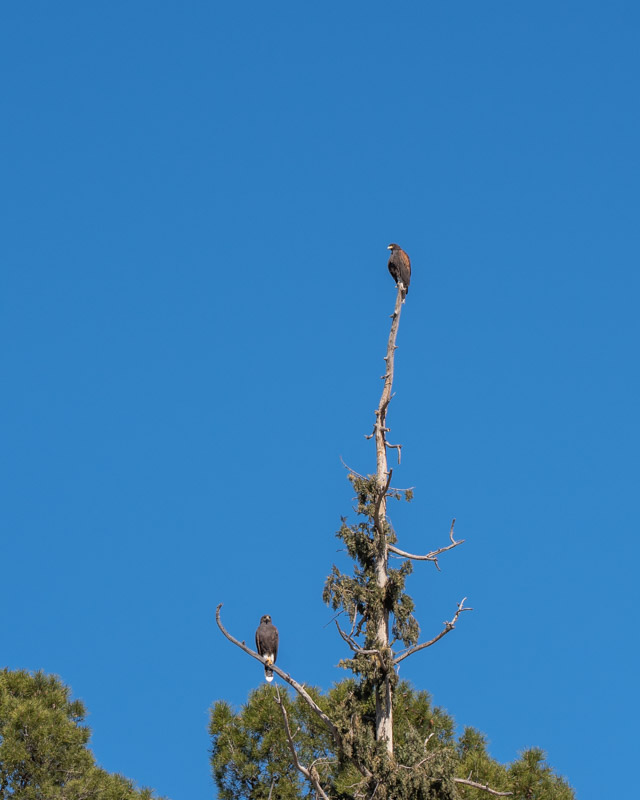
The Harris’s Hawk on the lower perch is the typical dark chocolate color with a white rump patch and long tail tipped in white. Harris’s Hawks show a large hunk of yellow in their face. From a distance, it can be mistaken for a large beak but looking closely you can see that the yellow is facial skin behind a light blue bill. Harris’s Hawks also have rusty wings (not visible in the photo below).
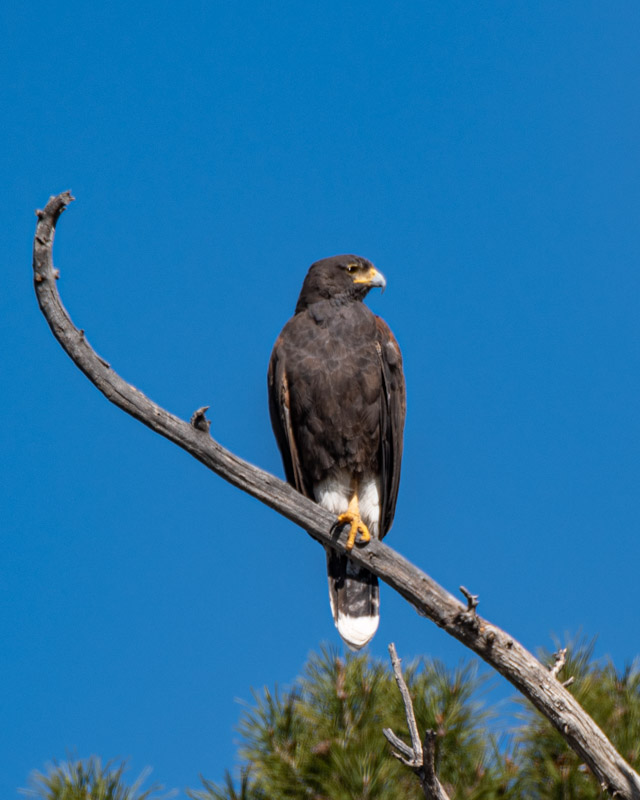
One morning as I was watching a perched Harris’s Hawk, a long wispy cloud that looked like a snake with an open jaw floated right past the bird. It looked like it might just gobble that bird up.
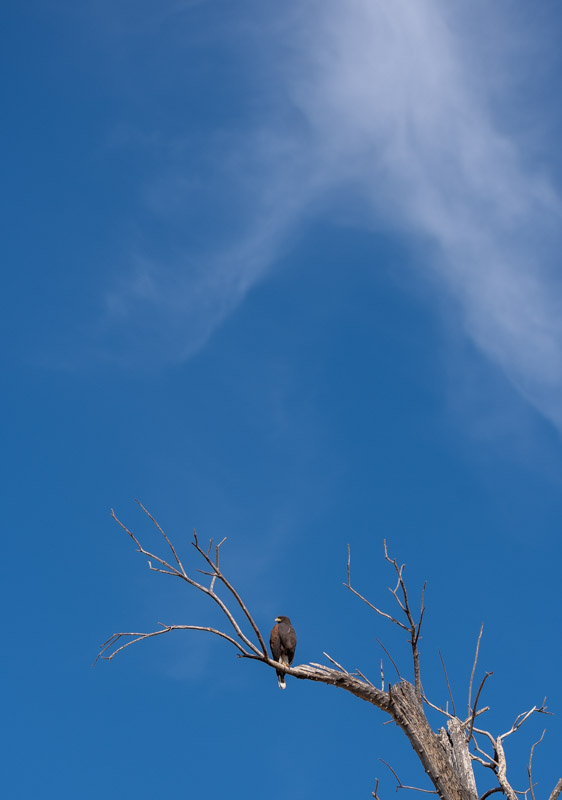
The hawk at the tip top perch now shows its rusty wings. I often wonder how a raptor can remain so steady on a pointy spot like this one.

When processing the photo I zoomed in and noticed that the Harris’s Hawk seemed to have put an extra safety feature to use. If you look closely, it has one long talon draped over the back toe on the other foot. It’s almost as if it is holding one foot in place with the other. I don’t know whether this is just accidental or purposeful, but either way it is interesting.
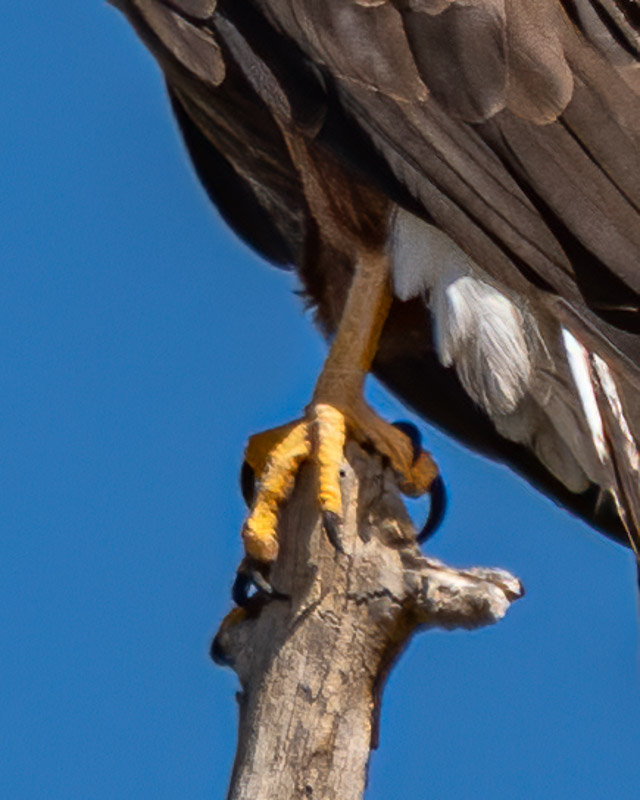
Once while two of the Harris’s Hawks were on the tall snag, another flew into the tree and disappeared. Shortly it reappeared and flew off with some debris in its beak. It may have been cleaning out last year’s nest and getting the “nest” nursery ready for a new family in the upcoming weeks.
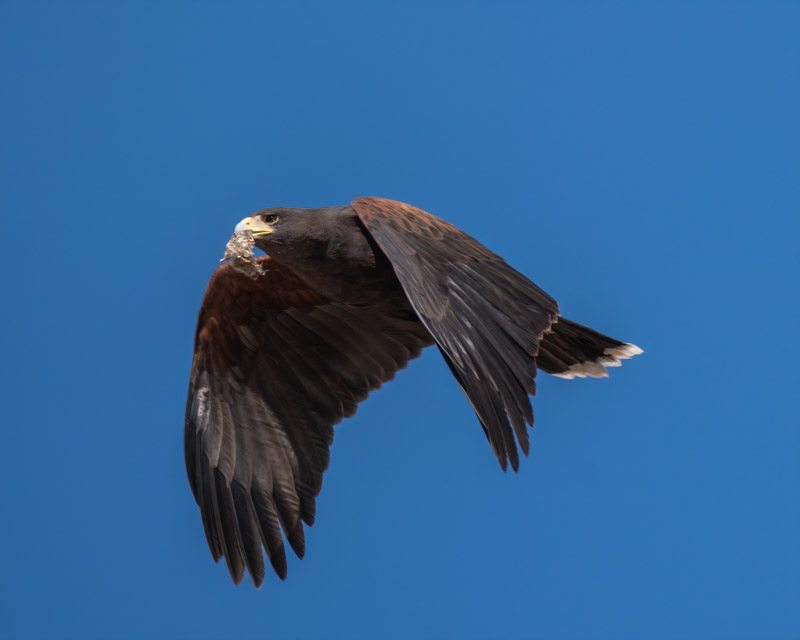
A few days earlier I had observed two of the Harris’s Hawks interacting. They would perch near each other and then, after 10-15 minutes, one would fly off to a distant perch. The second would soon fly towards the first bird and land nearby. The second bird often was calling out during this process. I watched as this behavior repeated itself. Harris’s Hawks in southern Arizona hunt in family groups. As raptors who have beaks and talons meant for killing, these families have worked out a family hierarchy to minimize the dangers of internal fighting and to maximize cohesiveness and efficiency as a family unit. They work out their dominance hierarchy with ritualized behaviors so that everyone knows their place in the pecking order and nobody gets hurt doing so. This large Harris’s Hawk took turns looking at the other bird and then looking at me.
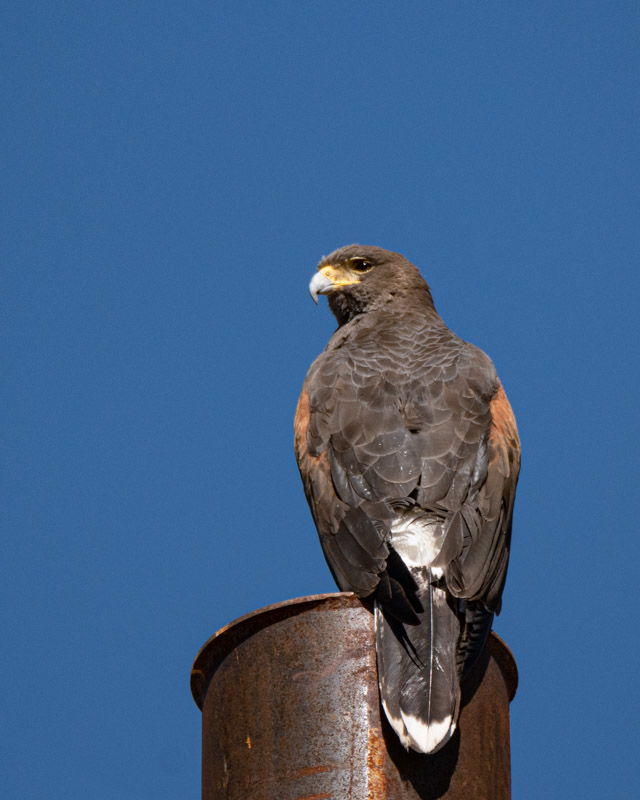
The other Harris’s Hawk flew off and landed somewhere nearby where I couldn’t see it. Then the second larger bird (the one pictured above) flew off towards a nearby tree. I moved closer to get a better shot only to witness the scene below. From my distance I wasn’t able to quite figure out what was going on. It wasn’t until later that I realized the second bird had landed next to and above the first bird who was now hanging upside down.
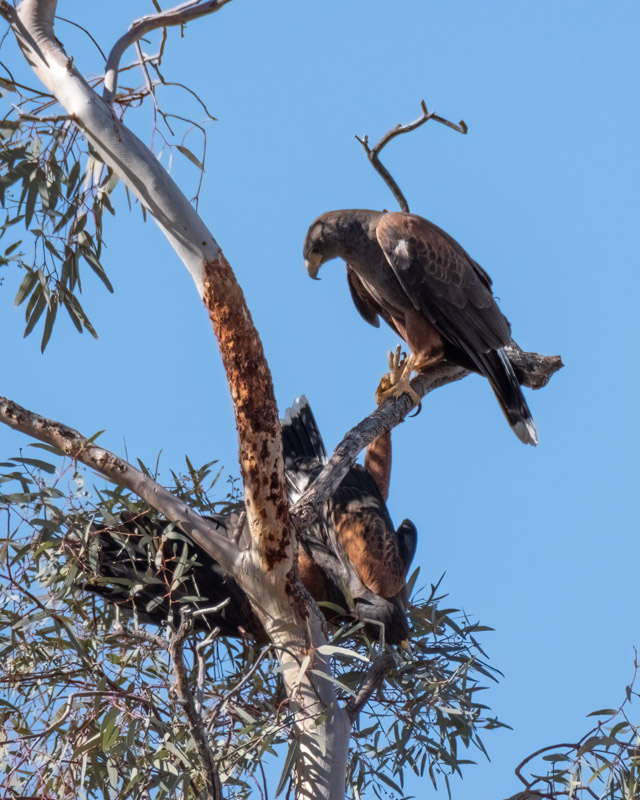
A closer examination told the rest of the story. The second bird had apparently dislodged the first bird from its perch and, as the first bird flopped over trying to hold on, the second bird took a very dominant stance. You can see it staring the lower bird down but look at its talons! The upper bird seems to have grasped onto the ankle of the first bird, holding on to it. It reminded me of an old movie in which the gangster is holding a quaking victim out the window of a tall building shaking him down. I can imagine the Harris’s Hawk waiting for the other bird to yell “Uncle” repeatedly. After a minute, the hawk let go and the lower bird flew to a nearby telephone pole to catch its breath.
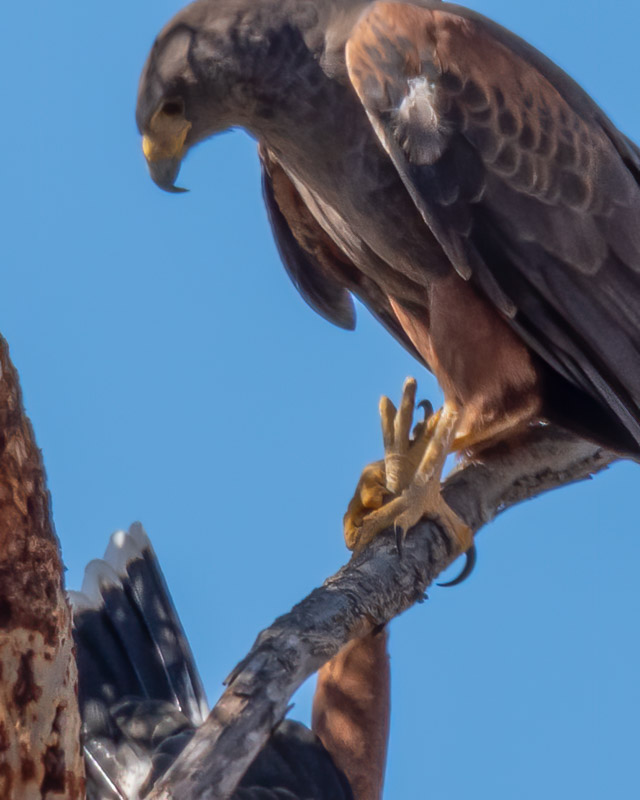
When the bird finally flew off again, the larger bird dutifully flew after it to continue to establish its superiority. Again, nobody got hurt (physically) during this interaction. Both birds will need each other to help hunt and provide for the family, but we know which bird will eat first when food is brought to the table!
